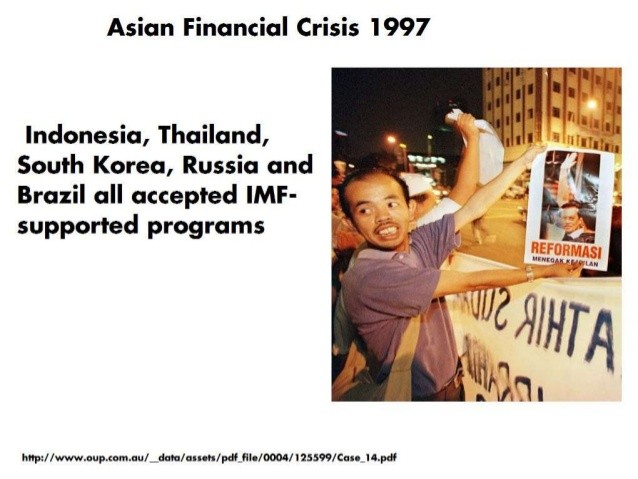PPT Lecture 13 International Money Markets PowerPoint presentation
Post on: 11 Сентябрь, 2015 No Comment

Lecture 13: International Money Markets
Lecture 13: International Money Markets The Eurocurrency Markets Where is this Financial Center? Grand Cayman Stingray City. PowerPoint PPT presentation
Title: Lecture 13: International Money Markets
Lecture 13 International Money Markets
- The Eurocurrency Markets
Grand Cayman
- Stingray City
- Turtle Burgers
Grand Cayman Islands as an Offshore Financial
Center
- Offshore Financial Center Countries or
jurisdictions with financial centers that contain
financial institutions that deal primarily with
nonresidents and/or in foreign currency on a
scale out of proportion to the size of the host
economy (OECD definition).
and specializing in providing corporate and
commercial services (including investment
services) to non-resident entities on a
confidential basis.
- Grand Cayman Islands (population 52,000)
- 533 banks, with approximately US415 billion in
deposits (making it fifth largest financial
center in the world). Other financial companies
include insurance, cash management, asset
management (including hedge funds).
- Foreign companies generally register as an
exempted company because they are guaranteed
against any future taxes for at least 30 years.
In addition, its list of shareholders is not
open to public inspection, they do not have to
file annual returns and no annual audits are
required.
- Total start-up costs to form an exempted company
withholding taxes, no estate, gift or inheritance
taxes, no sales taxes in the Cayman Islands. The
Caymans have no tax treaties with any nation.
Examples of Offshore Financial Centers IMF Data
(1999)
The International Financial Market
- It is the overall financial environment in which
global businesses and global investors operate.
It is represented by the following three sectors
regimes)
short term funds)
their domestic markets and non-residents (e.g.
London, New York, Chicago, Tokyo)
primarily of non-resident financial institutions
and non-resident clients (e.g. Cayman Islands,
Singapore, Hong Kong).
long term funds)
International Money Markets
- The International Money Market represents the
short and intermediate term borrowing and
investment market.
money markets either through (1) financial
intermediaries (primarily large global banks) or
through access to (2) direct financial markets.
Credit)
The Eurocurrency Market
- The international money market has as its core
the euro-currency deposit market, also called the
offshore currency market.
deposited in a bank outside its country of
origin.
dollar-denominated time deposits in banks located
outside of the United States.
lending of offshore currencies.
local banks (i.e. domestic to the financial
market), or foreign banks operating in the local
market (including U.S. banks).
Eurobanks include Citi, Deutsche, and UBS.
History of the Eurocurrency Market
- Market originated in the 1950s, when communist
governments (mainly the Soviet Union) needing
dollars for international trade and concerned
about a potential freeze of their dollar accounts
in US banks, shifted their deposits to London.
these dollar deposits was the Banque Commercial
pour I’Europe du Nord was also known by its cable
code, EUROBANK.
when OPEC countries re-cycled their dollar
earnings into the London markets.
were not subject to reserve requirements and (2)
unlike the U.S. at that time there were no
limitations on interest which could be paid on
such deposits.

of loans to governments and corporates.
Eurocurrency Market Structure
- The Eurocurrency market is essentially a
wholesale market (as opposed to a retail market).
large financial institutions, large multinational
corporations, and governments.
1,000,000).
deposits are not insured.
market (approximately 2/3rds).
but the major and largest market is in London
(with an estimated 20 of the total market).
Interest Rates in the Interbank Eurocurrency
Market
- In the London interbank Eurocurrency market there
are two important interest rates
which a Eurobank will offer on (deposit rate)
referred to at LIBID.
which a Eurobank will charge to lend a
eurocurrency (lending or borrowing rate)
referred to as LIBOR.
rates (by about 1/8).
LIBOR and the BBA
- Each morning a panel of banks submit their LIBOR
data for 15 different maturities (overnight out
to 1 year) in 10 currencies (including the US
om/interest-rates/libor/libor.aspx
see http//www.bbalibor.com/rates/historical
scale loan rates (i.e. as a benchmark rate) to
clients in the retail market.
USD LIBOR, November 9, 2011
USD LIBOR Panel, As of May 2011
EURIBOR Market
- Euribor stands for Euro interbank offered rate.
- These interest rates for the Euro deposits are
compiled by the European Banking Federation
(FBEFédération Bancaire de l’Union Européenne)
each business day.
maturities out to a year.
Overnight Index Average) rates
http//www.global-rates.com/interest-rates/libor/l
ibor.aspx
EURIBOR, November 9, 2011
Eonia (Euro Overnight Index Average) Rates
The Eurocurrency Markets and Global Firms
- The Eurocurrency market serves two valuable
functions for global firms
firms to earn a return on their excess (i.e.
idle) funds.
Interest Rate Comparisons Borrowing Market
LIBOR and Domestic Interest Rates
rates on equivalent borrowing and deposit
opportunities in each countrys domestic
financial market.
than equivalent domestic market rates, and
deposit rates will generally be higher than
equivalent domestic market rates.
lending rates) in the offshore markets than in
the domestic markets due to cost advantages in
the market (arising from less regulations and
domestic lending requirements e.g.
compensating balances).
External Financing of the Global Firm
Eurocurrency Loans (Euro-Lines)
- Eurocurrency loans (also called euro lines) are
short term lines of credit against eurocurrencies
offered by Eurobanks.
Eurobank and a customer allowing the customer to
borrow up to a pre-specified amount of a
designated euro-currency.
portion of the line).
borrowed amount.














